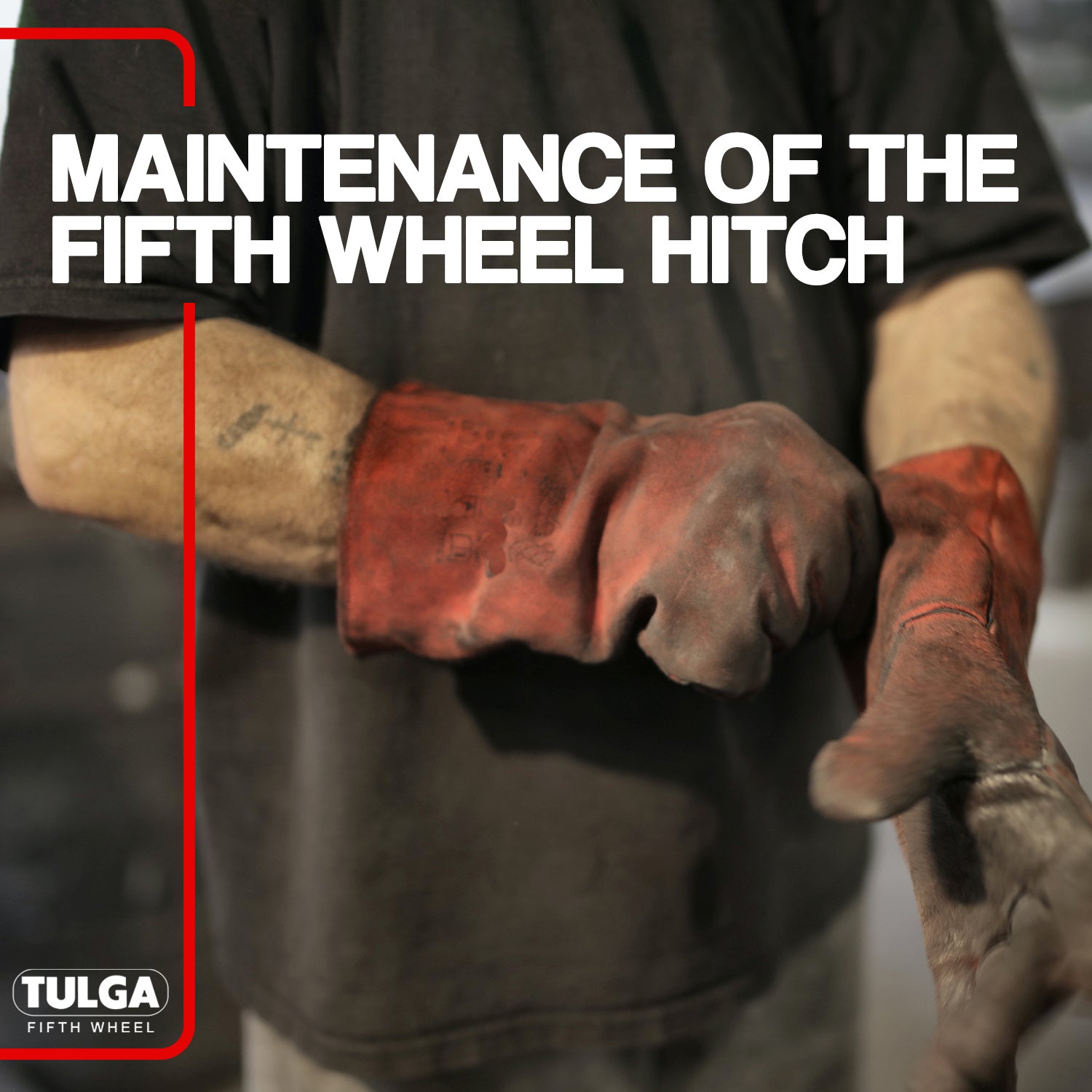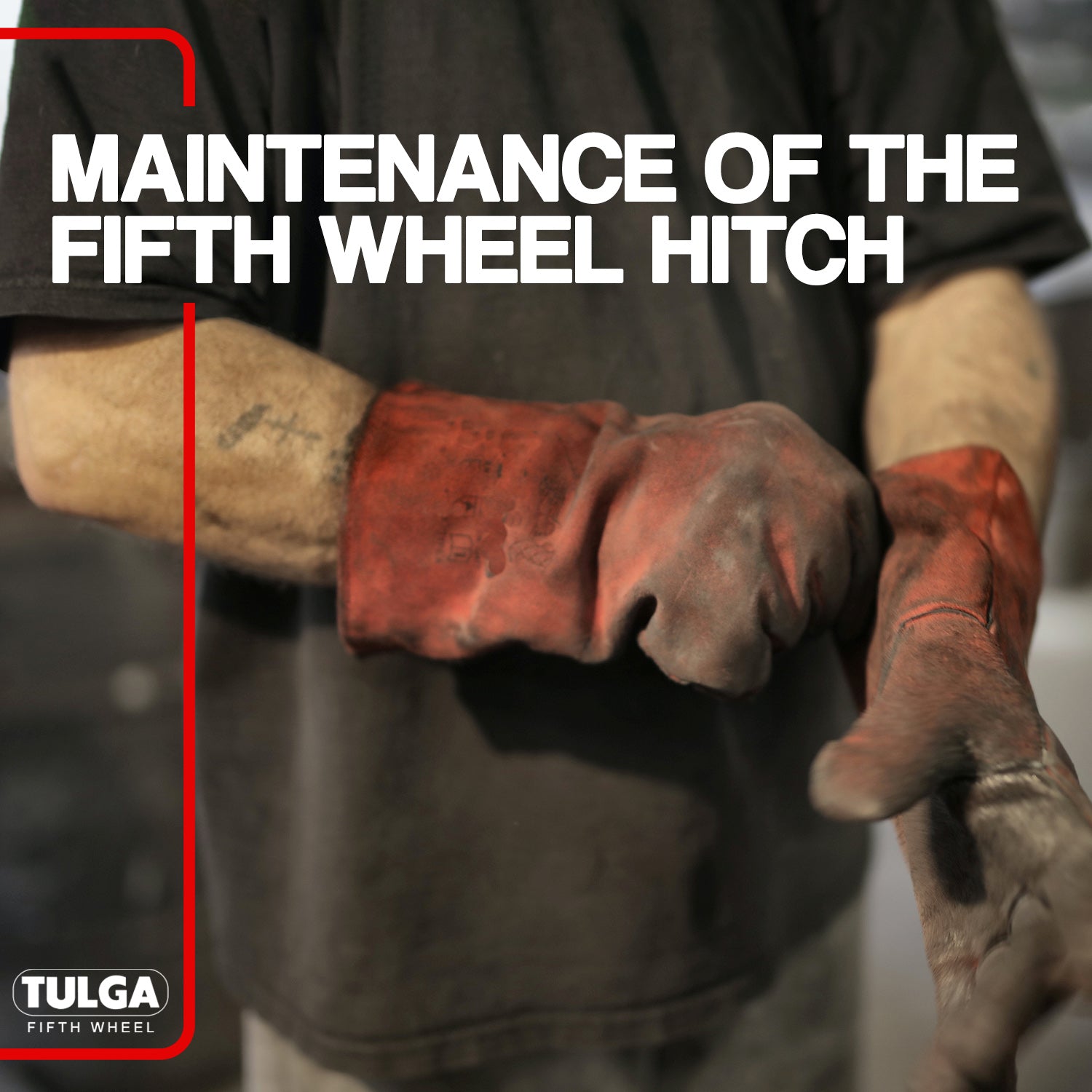Call (888) 611 2366
Support@tulgafifthwheel.com
Call (888) 611 2366
Support@tulgafifthwheel.com


For campers, the fifth wheel hitch is crucial because regular maintenance ensures a safe and smooth travel experience. Road dust, dirt, and constant use can wear down the pathways over time, making it very important to regularly maintain your fifth wheel hitch. This maintenance not only extends the life of the hitch but also provides a safe road for you and other drivers. This guide will explain how to keep your fifth wheel hitch in optimal condition, how to identify potential problems, and how to implement the necessary maintenance procedures.

Fifth wheel hitches must be maintained regularly, safely, and durably. Although these hitches are meant to function at their best when towing large loads, high loads and rough roads can eventually cause wear and tear. Frequent maintenance saves you money and ensures a safer driving experience by enabling the early detection of potential problems and preventing unplanned breakdowns. You must constantly inspect and repair your fifth wheel hitch to ensure the safety of other drivers as well as yourself when driving. This keeps it operating at peak efficiency, increases its longevity, and guarantees everyone using the road is safe. To maintain the best possible condition and guarantee the performance of your fifth wheel hitch, there are some procedures you must follow.
By following these steps, you can travel comfortably. Let's explore these steps together.
Understanding the components of a fifth wheel hitch is important for the proper maintenance and operation of this transport piece. Recognizing the main components of a fifth wheel hitch (hitch head, jaw mechanism, locking bars, and mounting rails) allows you to comprehend how each part functions and interacts with each other. With this knowledge, you can improve your ability to predict potential failures and apply the appropriate maintenance procedures. For maintaining regular upkeep and good operation, each component must be regularly checked and adjusted as needed. Knowing how the parts work together and affect the overall performance of your vehicle is essential if you want your fifth wheel hitch to be safe and durable.

Thanks to lubrication and cleaning, the fifth wheel hitch runs nicely. Road debris, dirt, and other environmental elements can adhere to the hitch mechanism's parts over time, increasing friction and resulting in wear and tear. To allow the moving parts to operate as efficiently as possible, frequent cleaning helps remove these deposits and residues. Lubrication keeps moving parts from wearing out and guarantees their smooth, efficient operation by reducing friction between parts. If you incorporate frequent cleaning and lubrication in your maintenance program, your fifth wheel hitch will last longer. Your driving safety will also be enhanced by this. Cleaning and lubricating your fifth wheel hitch regularly is essential for its efficient operation.
A fifth wheel hitch inspection checklist can be a helpful tool in identifying wear and tear. By carefully going over every item on this checklist, you can find potential problems before they get out of hand with the hitch. Signs such as wear, corrosion, loose fasteners, and cracks should be attended to right away to prevent more serious issues later on. Checklists provide a methodical approach that reduces the likelihood of overlooking potential defects or parts damage. This type of preventive maintenance not only lowers the cost of repairs and unplanned malfunctions but also increases the safety and dependability of the fifth wheel hitch. Your fifth wheel hitch's long-term security and functionality are heavily dependent on regular inspections and strict adherence to this checklist.
Grease Points and Lubrication: Ensuring Proper Functionality
5th Wheel hitch grease points are essential for maintaining the fifth wheel hitch's correct operation. These locations are purposefully chosen to minimize wear and tear and friction between the hitch's moving components, enhancing performance and encouraging sustainability. The sort of load the hitch is subjected to, usage frequency, and environmental conditions are just a few examples of the variables that might affect the choice of lubricant and how often it is used. Maintaining the grease points on your fifth wheel hitch regularly improves equipment dependability and averts unplanned breakdowns, making travel safer and more enjoyable.
Tightening bolts and fasteners is a critical step in maintaining the fifth wheel hitch, essential for preventing loose connections. Vibrations and impacts experienced over time can cause bolts and other fasteners to loosen, potentially leading to unexpected mishaps and compromising the stability and safety of the hitch. Regularly checking and tightening these elements is recognized as a fundamental practice to ensure a secure connection and maximum performance. This proactive approach enables early detection of potential issues, preventing major damages or safety risks before they occur. Therefore, periodically inspecting and properly adjusting the bolts and fasteners is considered a key method to maintain the long-term safety and functionality of your fifth wheel hitch.
It is imperative to examine the safety measures, including the locking mechanisms and breakaway system, to ensure the fifth wheel hitch operates safely. By averting potential mishaps, the breakaway system serves as a safety precaution that increases the safety of both the driver and other road users by automatically activating the trailer's brakes if it abruptly separates from the towing vehicle. Locking systems minimize the possibility of detachment or slippage by guaranteeing that the trailer is firmly fastened to the towing vehicle. It's critical to regularly check these systems for indications of wear, damage, or malfunction. By doing this, it is made sure that the safety features are always operating at their best and are capable of handling situations. Therefore, regularly checking the safety features of your fifth wheel hitch is important for a safe and smooth transportation experience.

Inspecting the hitch rails and mounting brackets is crucial for maintaining structural integrity, particularly vital for the fifth wheel hitch parts during the transportation of heavy loads. The robustness of these components is essential for safe and effective transportation. Over time, rails and mounting brackets can develop structural weaknesses, such as wear, cracks, or rust. Regular inspection of these parts allows for early identification of potential problems, enabling timely corrections to prevent larger issues. This inspection also ensures that the hitch is safe to use before each operation. Therefore, regularly checking the hitch rails and mounting brackets is very important for preserving the long-term reliability and structural integrity of the system.
Rust prevention and corrosion control are critical for protecting the environment from damage. Metal parts like the fifth wheel hitch, especially in salty or humid conditions, are prone to rust and corrosion over time. This can lead to the weakening of parts, compromising the system's integrity, and potentially causing failure or safety issues. Therefore, regular rust prevention and corrosion control processes are necessary to prevent such damage. Metal surfaces are protected through appropriate lubrication and regular cleaning, which slows down the wear process. Additionally, regularly monitoring the hitch for signs of corrosion and intervening early extends the life of the equipment and ensures its continuous safe use. Thus, rust prevention and corrosion control secure the long-term performance and safety of the fifth wheel hitch.
When not in use, store your fifth wheel hitch properly to increase its longevity and functionality. The risk of rust, corrosion, and other environmental hazards is decreased under storage conditions. Pick a spot to store your fifth wheel hitch that is shielded from the sun, rain, and snow. Steer clear of salty and humid air to reduce the chance of metal parts corroding. Rust and corrosion can be avoided by keeping the hitch in a dry and clean environment. Lubricating the moving components protects them and ensures smooth operation during prolonged storage. Checking your hitch and performing necessary maintenance during periods of non-use ensures that your equipment remains safe and ready to use. Therefore, properly storing your fifth wheel hitch is crucial for safety and long-term performance.
Especially when complex mechanical issues or significant signs of wear are observed, an expert perspective may be necessary. When all components of the trailer hitch are thoroughly examined by professional services, expert solutions can be discovered. Specialist technicians can prevent potential problems and avoid major failures or safety hazards through comprehensive inspection and maintenance. To maintain the reliability and performance of your fifth wheel hitch, schedule a professional inspection annually or after a certain number of miles. Symptoms like intensive use of the equipment, strange noises, or a decrease in performance can indicate that it's time to seek expert assistance. In such cases, obtaining professional maintenance and inspection fifth Wheel service is crucial to ensure the safety and longevity of your fifth wheel hitch.
Excessive noise, jamming, loose connections, or failure to lock are common problems encountered during the use of a trailer hitch. Resolving these issues starts with accurately identifying the problem. Inadequate lubrication or dirt accumulation, as well as loose connections, can be the cause of jamming and noise issues. Problems with the locking mechanism may result from the presence of damaged parts or incorrect assembly. To eliminate these issues, regular 5th wheel maintenance and proper lubrication, replacement of damaged parts, and correct assembly are necessary. Ensuring the safe and efficient operation of your trailer hitch enhances your safety on the road and prevents potential major breakdowns.
Safety is always a priority, thus following the manufacturer's instructions and recommendations is vital when using the fifth wheel hitch. Manufacturers choose the most appropriate maintenance practices, usage directions, and safety advice for their products. These standards aim to improve the safety, dependability, and performance of your equipment. Following the manufacturer's instructions decreases the chance of misuse or maintenance problems while also helping to preserve warranty conditions. Furthermore, following the manufacturer's guidelines eliminates problems such as faulty assembly or the use of incompatible parts. As a result, properly adhering to the manufacturer's instructions and recommendations ensures the long-term and safe usage of your fifth wheel hitch, so increasing your and other drivers' safety on the road.
Maintaining your fifth wheel hitch and ensuring safe travels encompasses everything we've listed in this guide. We hope you find it useful. As you can see, using the fifth wheel hitch is not difficult as long as you do not overlook these steps. If you need additional help with your fifth wheel hitch or any other products of ours, you can always contact us. Don't forget to visit our website for more detailed information!
We wish you safe travels!